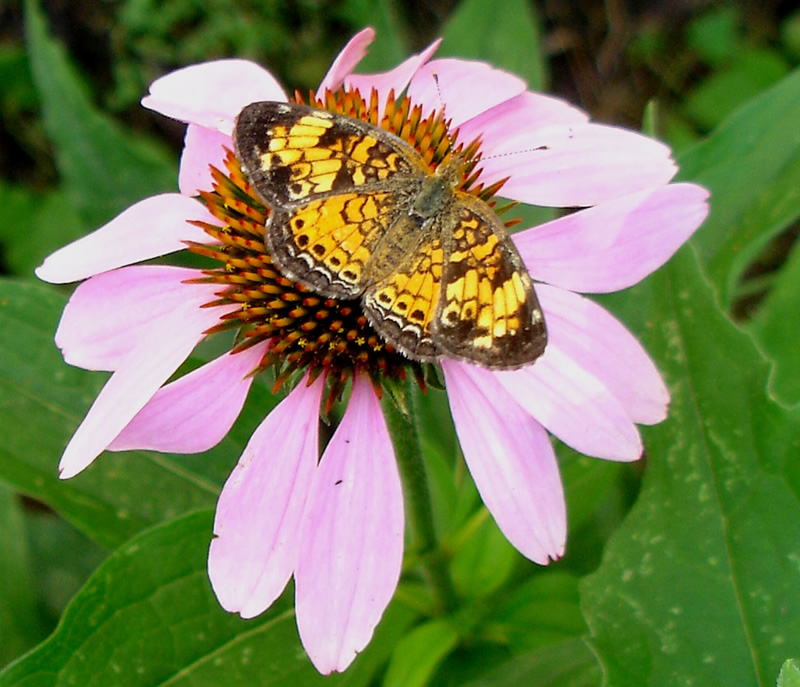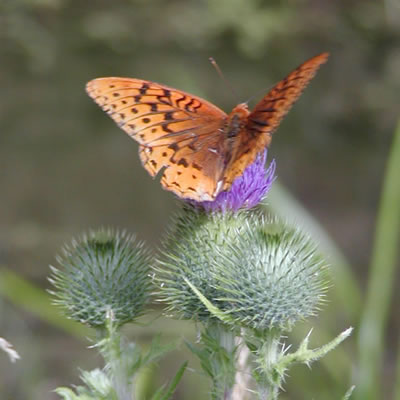Butterfly Pollination
Butterflies are very active during the day and visit a variety of wildflowers. Butterflies are less efficient than bees at moving pollen between plants. Highly perched on their long thin legs, they do not pick up much pollen on their bodies and lack specialized structures for collecting it.
Butterflies probe for nectar, their flight fuel, and typically favor the flat, clustered flowers that provide a landing pad and abundant rewards. Butterflies have good vision but a weak sense of smell. Unlike bees, butterflies can see red.
Butterfly Flowers
Butterflies typically visit flowers that are:
- In clusters and provide landing platforms
- Brightly colored (red, yellow, orange)
- Open during the day
- Ample nectar producers, with nectar deeply hidden
- Nectar guides present
- May be clusters of small flowers (goldenrods, Spirea)
Many butterflies produce scents that attract the opposite sex. Many of these scents often smell like the flowers that they are attracted to and visit. The scent of these butterfly-pollinated flowers might have evolved as an adaptation that made use of the existing attractiveness of these scents.
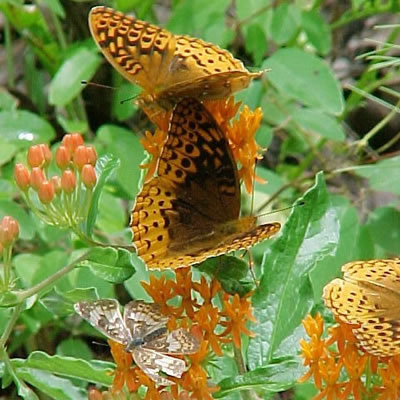 Fritillary butterflies and crescent butterfly on butterfly weed (Asclepias tuberosa). Photo by Rhonda Stewart.
Fritillary butterflies and crescent butterfly on butterfly weed (Asclepias tuberosa). Photo by Rhonda Stewart.
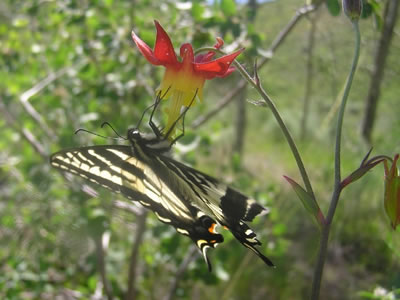 Pale Swallowtail butterfly (Papilio eurymedon) on columbine (Aquilegia sp.). Photo by Humboldt-Toiyabe National Forest.
Pale Swallowtail butterfly (Papilio eurymedon) on columbine (Aquilegia sp.). Photo by Humboldt-Toiyabe National Forest.
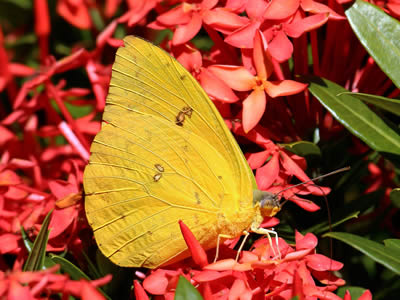 Cloudless sulphur butterfly. Photo by Charles J Sharp [CC BY-SA 4.0], via Wikimedia Commons.
Cloudless sulphur butterfly. Photo by Charles J Sharp [CC BY-SA 4.0], via Wikimedia Commons.
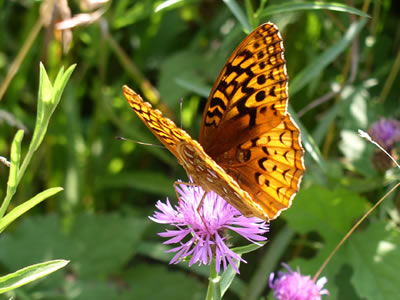 Fritillary. Photo by Beatriz Moisset.
Fritillary. Photo by Beatriz Moisset.
Butterflies and Milkweed
Many insects cannot feed on the sap of milkweeds. The caterpillars of the milkweed butterflies (Danaidae) – e.g., the monarch butterfly – feed on the leaves of milkweed plants. The milky juice of the plant, once ingested, makes the caterpillars and the adult butterflies distasteful to birds and other predators. Some butterflies like the viceroy butterfly are not milkweed eaters but they mimic the color and patterns of the distasteful milkweed butterflies to utilize this strategy for survival.
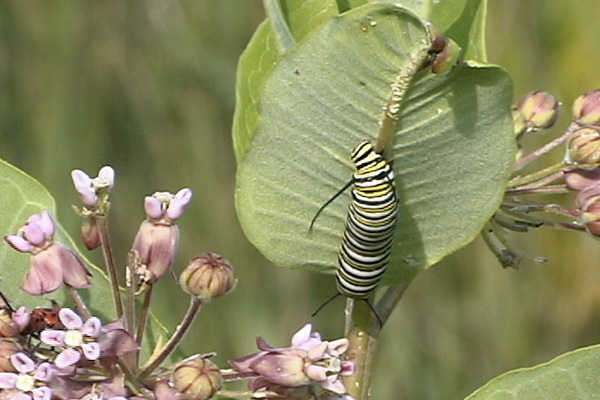 Monarch larva feeding on milkweed. Monarch Monitoring Project.
Monarch larva feeding on milkweed. Monarch Monitoring Project.
Butterfly Checklists
The Forest Service Eastern Region developed checklists of butterfly species that may be found on the national forests and grasslands of the northeastern United States.
- Allegheny National Forest (PDF, 212 KB)
- Chequamegon-Nicolet National Forest (PDF, 199 KB)
- Chippewa National Forest (PDF, 207 KB)
- Finger Lakes National Forest (PDF, 17 KB)
- Green Mountain National Forest (PDF, 205 KB)
- Hiawatha National Forest (PDF, 201 KB)
- Hoosier National Forest (PDF, 198 KB)
- Huron National Forest (PDF, 211 KB)
- Mark Twain National Forest (PDF, 219 KB)
- Midewin National Tallgrass Prairie (PDF, 213 KB)
- Monongahela National Forest (PDF, 215 KB)
- Ottowa National Forest (PDF, 205 KB)
- Shawnee National Forest (PDF, 279 KB)
- Superior National Forest (PDF, 211 KB)
- Wayne National Forest (PDF, 215 KB)
- White Mountain National Forest (PDF, 201 KB)


